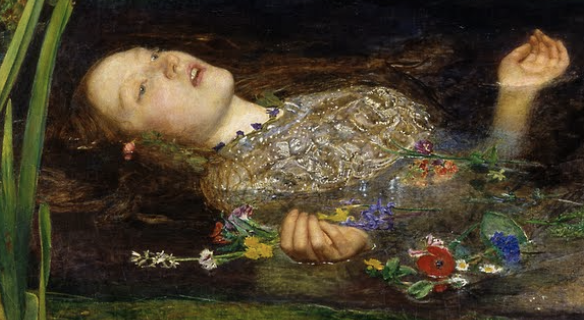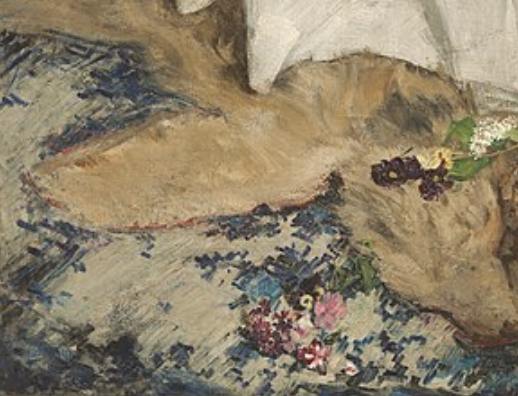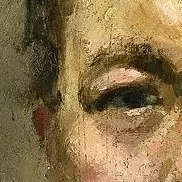Openly mocked by the audience at the first Salon des Refuses in 1863, Whistler’s vision of “art for art’s sake” did not go over well at that time.
You can see influences of the Pre-Raphaelite brotherhood (emo kids of the 19th century art world) in this painting, and it is a great example of the transition from pre-raphaelite to impressionism. In it, Whistler paints a woman standing on some sort of ferocious animal rug.
The pre-raphaelites sought honesty, drama, and dedication beyond the main characters: a woman dressed in a simple white gown (depicting innocence perhaps), contrasting with the animal baring its teeth, so low in the picture, it’s often overlooked. There are also flowers on the ground - real ones at her feet, and part of the carpet under the wolf rug. These are classic hallmarks of the brotherhood, who Whistler had become friendly with in London.
Pictured below is an example of pre-raphaelite ideals, similar to Whistler’s painting: Dedication to details such as the flowers and the character holding a flower in her hand (Ophelia - Millais, 1851).

You can also see the definition fading. At certain parts of the picture - towards the bottom, you can see visible brush strokes almost as if the rug and wolf skin were moving.

However, impressionism is breaking away from pre-raphaelite ideals in the character: she is not doing anything special. The impressionists sought to show life as it is. The industrialization of Europe brought many changes, and the impressionists were dedicated to displaying these for all to see. This however, is a far cry from something like the pictured work below (Les Raboteurs de parquet - Caillebotte, 1875):

Where common people are depicted doing common tasks (unheardof in paintings at the time).

